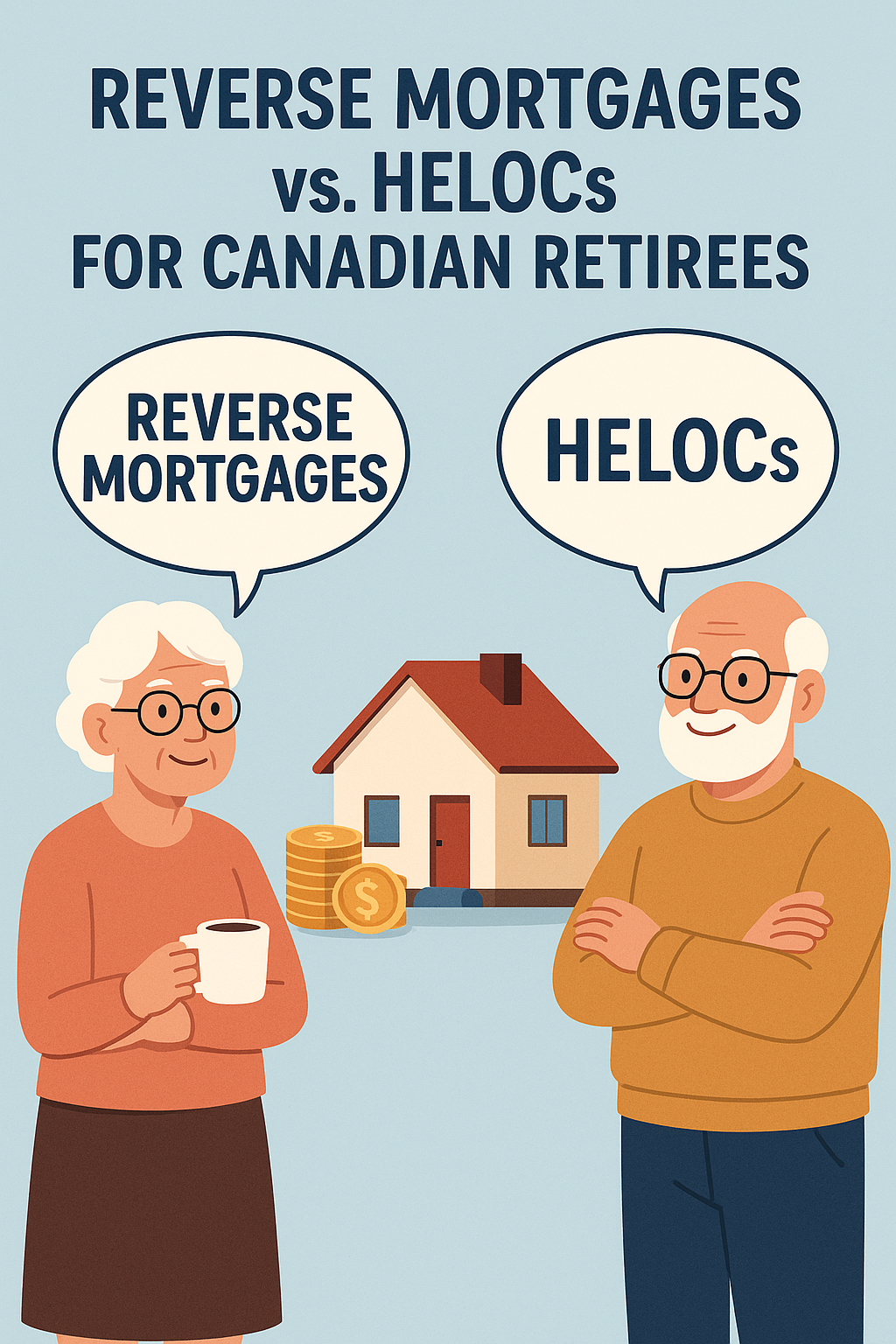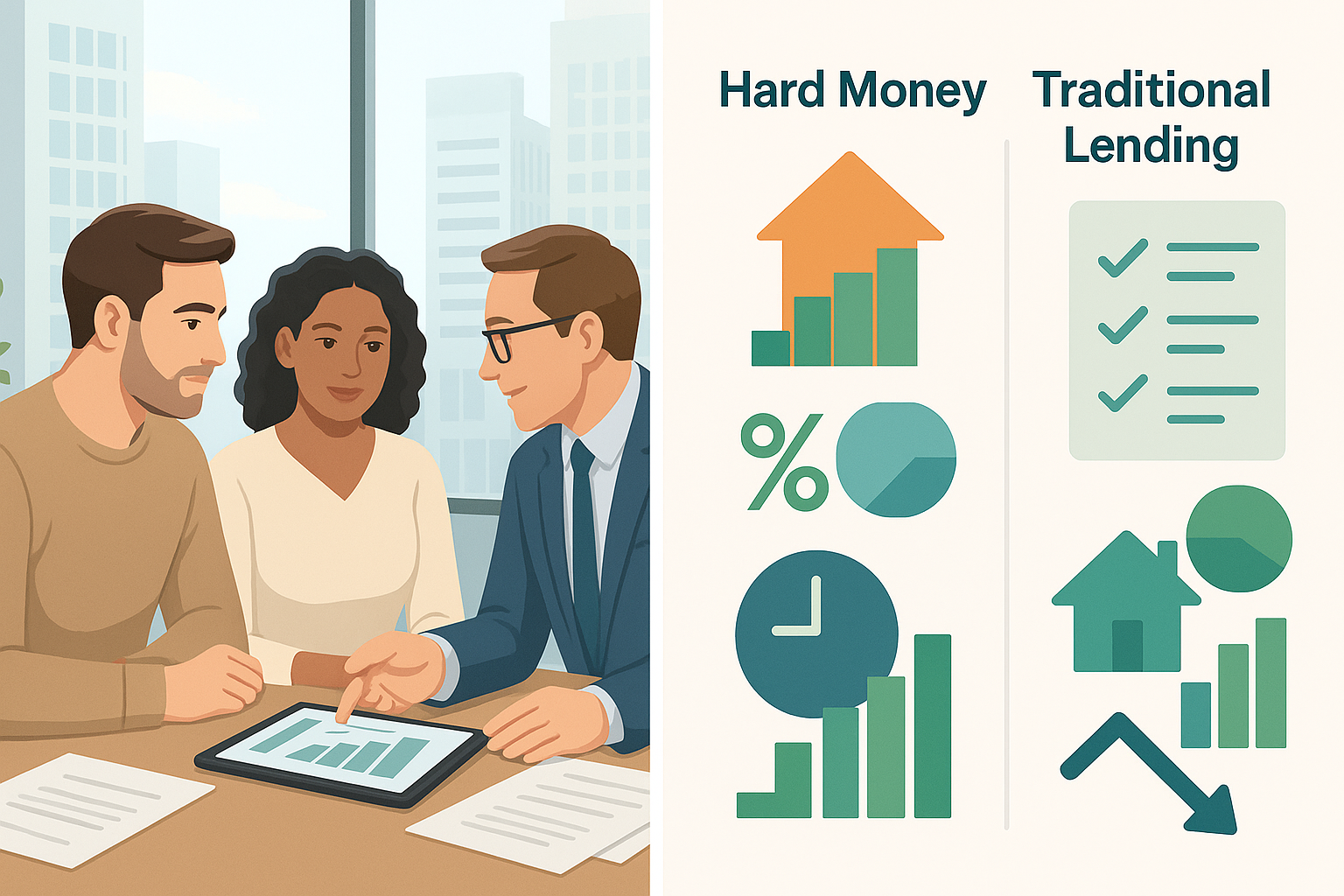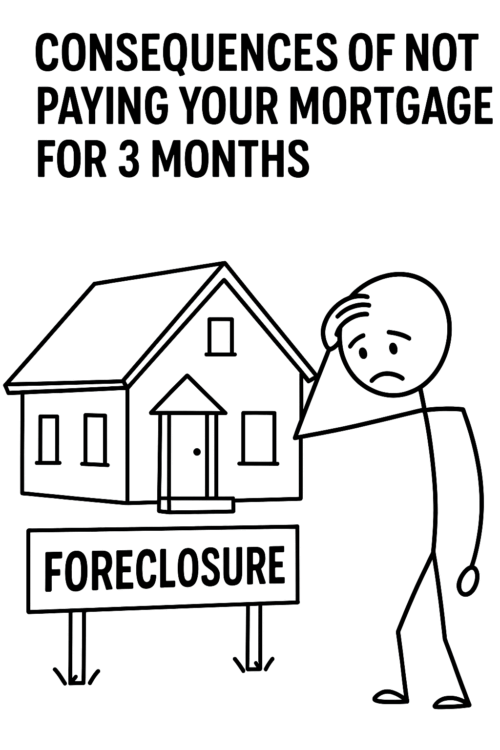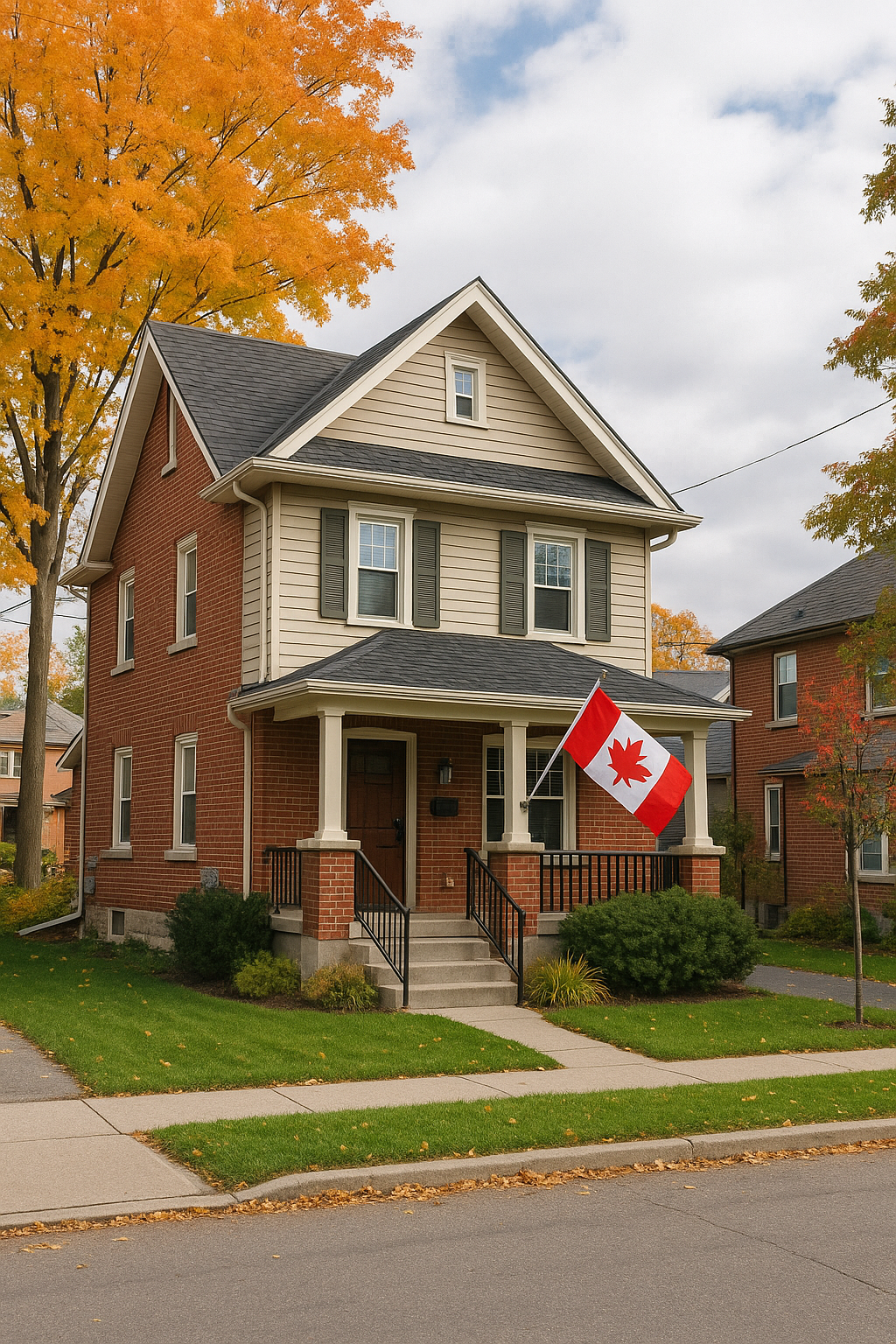Table of Contents
ToggleReverse Mortgages vs. HELOCs for Canadian Retirees: Which Unlocks More Freedom in 2025?
Primary keywords: reverse mortgage Canada, HELOC for seniors, HELOC vs reverse mortgage, home equity in retirement, best way to access home equity
Secondary keywords: home equity line of credit, second mortgage, refinance, debt consolidation
Why this decision matters now
If you’re 55+ and own your home, your equity can be a powerful tool for retirement income, renovations to age in place, in-home care, or helping adult children. In 2025, two of the most flexible ways to access that equity are a reverse mortgage and a home equity line of credit (HELOC). Each can unlock cash—yet the costs, risks, and lifestyle fit are very different.
This guide breaks down reverse mortgage vs. HELOC in plain language, shows where each shines, and gives you a simple decision framework. Throughout, we’ve linked to LendToday resources so you can go deeper or apply when you’re ready.
Quick definitions (in Canadian terms)
Reverse mortgage (age 55+)
A reverse mortgage lets you convert a portion of your home equity into tax-free funds without selling or making mandatory monthly payments. You remain on title and repay when you sell, move out, or your estate settles the home. Learn more on our Reverse Mortgage service page.
Typical features:
-
Eligibility from age 55
-
Access up to a portion of your equity (often up to 55%, depending on age, home value and lender)
-
No required monthly payments; interest accrues
-
Funds can be received as a lump sum, installments, or a combination
-
Tax-free proceeds in Canada
See our explainer How Reverse Mortgage Loans Work and How Much Money Can You Get from a Reverse Mortgage? for details.
Home Equity Line of Credit (HELOC)
A HELOC is a revolving line secured against your home. You borrow what you need, when you need it, and pay interest only on the outstanding balance. Rates are usually variable and move with the market. Learn the basics on our Home Equity Line of Credit (HELOC) page, or see How to Get Approved for a HELOC in 6 Steps.
As of mid-2025, HELOC rates commonly sit between ~6% and 12%, depending on lender and profile.
Side-by-side: Reverse mortgage vs. HELOC
| Feature | Reverse Mortgage | HELOC |
|---|---|---|
| Minimum age | 55+ (owner on title) | No age minimum (standard underwriting) |
| Payments | Not required (interest accrues) | Interest-only monthly on what you’ve borrowed |
| Rate type | Fixed or variable (depends on lender/program) | Usually variable |
| How you get funds | Lump sum, regular draws, or both | Revolving line; draw any time up to limit |
| Borrowing limit | A portion of equity (often up to ~55%, factors vary) | Up to 65% as a standalone HELOC (max 80% combined with mortgage) |
| When it’s repaid | When you sell, move out long-term, or estate settles | You repay on your own schedule; principal due at sale or refinance |
| Pros | No monthly payment pressure; age-in-place; tax-free proceeds | Flexible, reusable, interest-only cash flow, lower cost if used sparingly |
| Cons | Interest compounds; reduces estate value | Variable rates can rise; lender can reduce/cancel limit in downturns |
Lender discretion: HELOC lenders can reduce your credit limit if home values drop or policies tighten—one reason retirees should keep buffers. See the note in our HELOC page.
When a HELOC for seniors makes more sense
Choose a HELOC if you:
-
Have predictable pension/retirement income to handle interest-only payments comfortably—even if rates tick up.
-
Want flexibility for uneven expenses (e.g., helping family occasionally, travel, car replacement, seasonal costs).
-
Plan short-term borrowing—you’ll borrow, then pay down quickly; carrying a balance long-term is costlier at variable rates.
-
Need standalone access without breaking your first mortgage (a second-position HELOC can sit behind your current loan). Read: Can You Get a HELOC Without Refinancing?
Good to know: You can often qualify up to 65% LTV on a HELOC (and 80% combined across mortgage + HELOC). See limits and how interest-only payments work on our HELOC page.
When a reverse mortgage is the smarter fit
Choose a reverse mortgage if you:
-
Prefer no required monthly payments to reduce cash-flow stress in retirement. See the Reverse Mortgage page for program basics.
-
Plan to age in place 5–10+ years and want predictable access to funds without refinance/renewal chores.
-
Need to fund in-home care or major renovations to make your home accessible.
-
Want tax-free access to equity (consult your tax advisor on personal implications). See our explainer How Reverse Mortgage Loans Work.
-
Are okay with estate value shrinking over time as interest accrues—balanced by the ability to remain in the home and avoid monthly payments.
Curious about potential amounts? Our article How Much Money Can You Get from a Reverse Mortgage? Reviews the typical factors and common upper limits in Canada.
Cost realities (and how to keep them down)
HELOC costs:
-
Rate is variable and tied to prime; plan for rate volatility. As of mid-2025, many borrowers see effective ranges around 6%–12% based on lender and profile. If you’ll carry a balance for years, model payments at +1%–2% higher than today.
-
Setup fees are modest (appraisal, legal, registration). You pay interest only on what you use.
Reverse mortgage costs:
-
Rates can be higher than HELOCs, but the payment-free structure is the tradeoff.
-
Closing costs include appraisal, independent legal advice, and registration. Because interest accrues, plan for the compounding effect on your remaining equity.
Tip: If you need a one-time lump sum and want a fixed payment (not interest-only), consider a Home Equity Loan or Second Mortgage as an alternative—useful for debt consolidation or a defined renovation budget.
Three real-world retiree scenarios
1) “We’re comfortable monthly, just need a buffer for life.”
You have stable pension income and want access to $20–$40k for travel, car upgrades, and gifts—but expect to pay balances down quickly.
Fit: HELOC. Borrow only when needed; interest-only payments keep cash flow light. See our HELOC guide for how revolving access works.
2) “We’re house-rich, cash-flow tight—and want to age in place.”
Most wealth is in the home; you’d like $1,000–$1,500/month to enhance lifestyle or fund in-home support, but monthly debt payments are stressful.
Fit: Reverse mortgage, potentially with scheduled advances. Start here: Reverse Mortgage.
3) “We need a defined lump sum for renovations now.”
Your bathrooms and entryway need accessibility upgrades, estimated at $60k. You want predictable repayment and to be done in a few years.
Fit: Consider a Home Equity Loan (fixed payment) or a HELOC you aggressively repay. If income is tighter, a reverse mortgage lump sum can also work—just weigh long-term compounding carefully.
Risks & safeguards retirees should consider
-
Variable-rate risk (HELOC): Payments rise if the prime increases. Stress-test your budget at higher rates. HELOC FAQs & Rates can help you sense ranges.
-
Limit reductions (HELOC): Lenders can reduce or freeze lines during downturns—keep an emergency fund.
-
Equity erosion (Reverse): Interest compounds; your estate may inherit less.
-
Benefit coordination: Large lump sums can affect income-tested benefits. Speak with your advisor.
-
Title & legal: Independent legal advice (ILA) protects you—especially for reverse mortgages.
Simple decision framework (5 questions)
-
Is a monthly payment okay—or stressful?
-
Okay → HELOC may be cheaper.
-
Stressful → Reverse mortgage reduces pressure.
-
-
How long will you carry the balance?
-
Short (≤2–3 years) → HELOC.
-
Long/indefinite → Reverse mortgage.
-
-
Do you need flexible, repeat access—or a single project budget?
-
Flexible access → HELOC.
-
Single budget → Home equity loan, second mortgage, or reverse mortgage lump sum.
-
-
How important is preserving estate value vs. improving quality of life now?
-
Estate priority → Limit borrowing; consider smaller HELOC.
-
Lifestyle priority → Reverse mortgage or hybrid approach.
-
-
Will you move within 3–5 years?
-
Likely yes → HELOC (easier to unwind).
-
Staying put → Reverse mortgage can shine.
-
How to move forward (with helpful internal links)
-
Estimate your equity with our Home Equity Calculator.
-
Compare options:
-
Reverse mortgage overview: Reverse Mortgage.
-
HELOC basics: HELOC page and HELOC approval steps
-
Alternative lump-sum options: Home Equity Loans and Second Mortgages.
-
-
Talk to a licensed broker about structuring the right mix (for example, pairing a smaller reverse mortgage with a modest HELOC). Contact us or go straight to the Apply Now page for a quick start.
Final thoughts
There’s no universal “best” option for Canadian retirees—there’s the option that fits your cash flow, timeline, and priorities.
-
If you value flexibility and low carrying costs for short-term needs, a HELOC often wins.
-
If you want payment-free cash flow and a simple way to age in place, a reverse mortgage may be worth the higher long-term cost.
-
For one-time, defined projects with set payments, a home equity loan or second mortgage can be the sweet spot.
Whichever path you choose, we’ll help you optimize for safety and savings, not just access. Reach out for a no-pressure review of your numbers and a personalized plan.
This article is for education only and not financial, tax, or legal advice. Program features and eligibility can change. Speak with a qualified professional about your situation.
- The Critical Consequences of Not Paying Your Mortgage for 3 Months - November 21, 2025
- The Critical Differences Between a HELOC and a Home Equity Loan Every Canadian Homeowner Must Know - November 19, 2025
- How to Get a Personal Loan Secured by Home in Canada in 2025 - November 17, 2025






